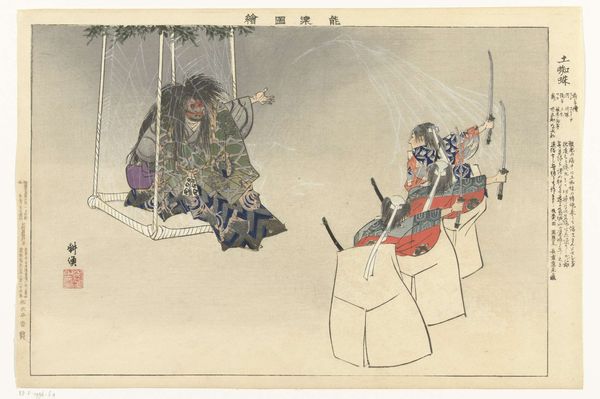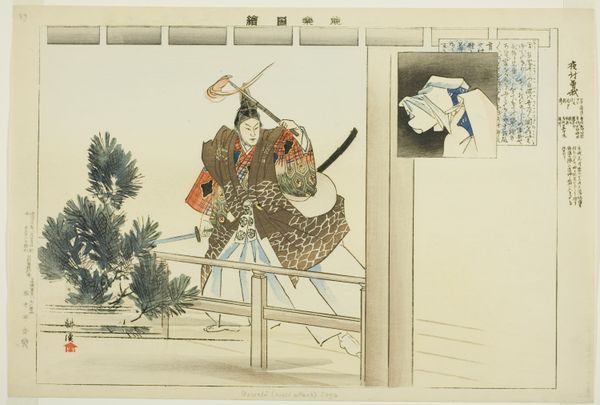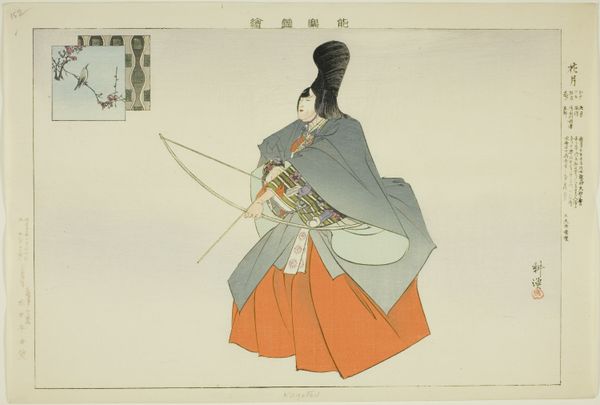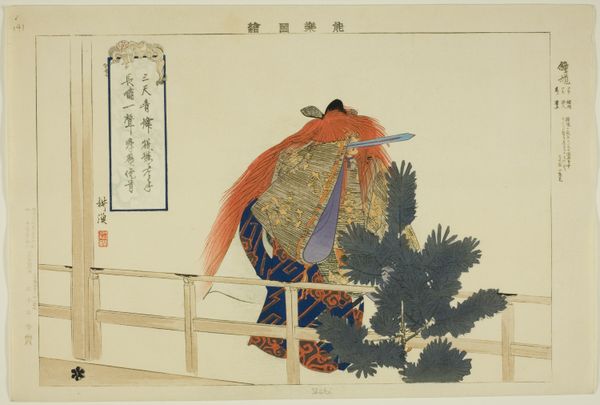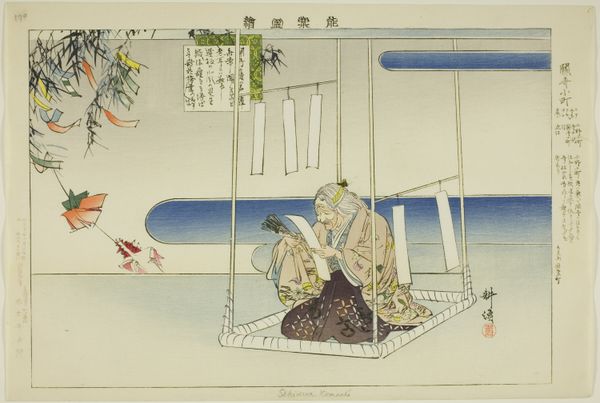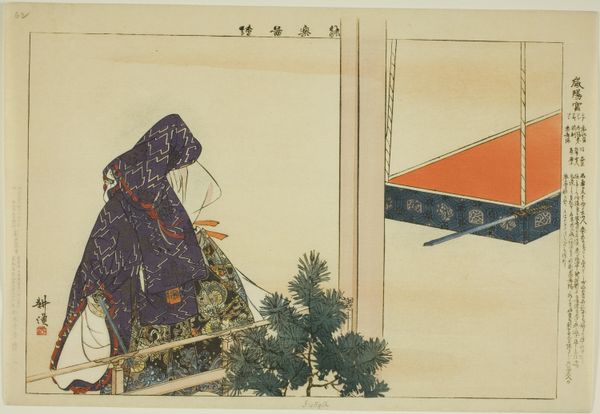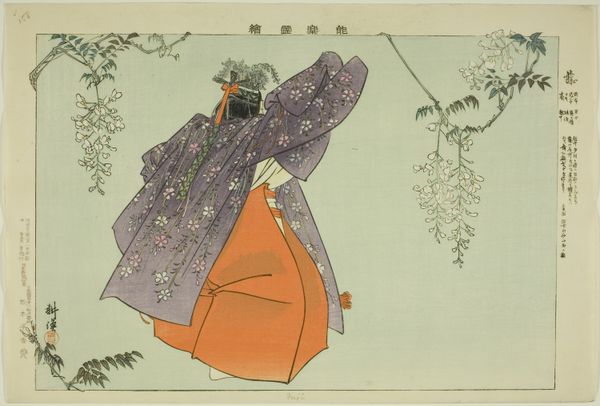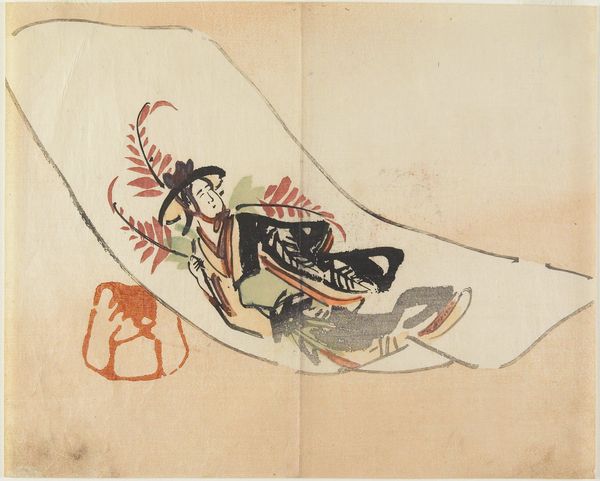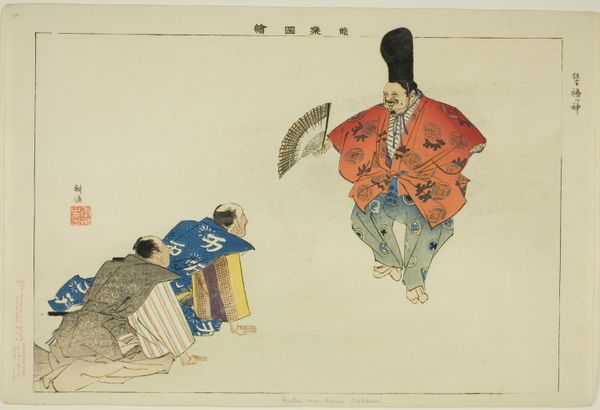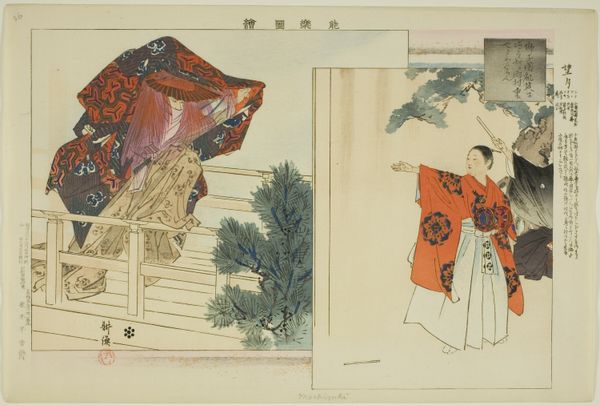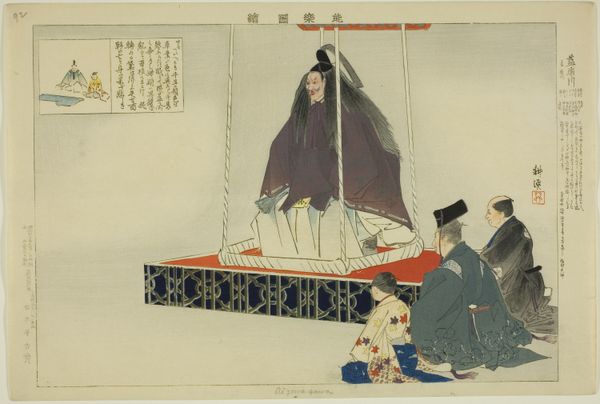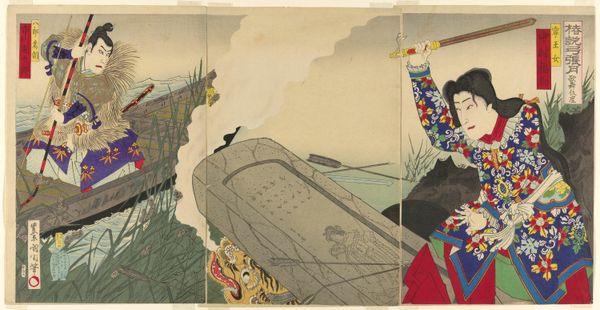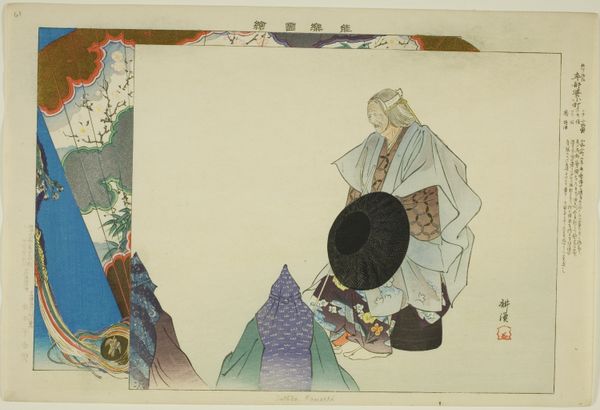
Tsuchigumo, from the series "Pictures of No Performances (Nogaku Zue)" 1898
0:00
0:00
Dimensions: Approx. 25.2 × 37.4 cm (10 × 14 4/3 in.)
Copyright: Public Domain
Curator: Looking at this piece by Tsukioka Kogyo, entitled "Tsuchigumo" and created in 1898, what strikes you? It’s a woodblock print currently residing here at The Art Institute of Chicago. Editor: The initial impression is striking. The sheer visual weight of the spider-like creature contrasts sharply with the almost ethereal rendering of the warrior. It is a dynamic stage. Curator: Exactly! It is from a series called "Pictures of No Performances," a reflection of the vibrant theatrical traditions. Note the lines; how would you characterize the materials employed? Editor: Given its creation through the woodblock technique, you've got the textures embedded. The choice of papers matters. The composition seems to use the materials as narrative drivers here. You see how the fibers take center stage to represent, almost physically, the thematic weight of identity? Curator: Fascinating point about identity. Thinking historically, the late 19th century saw a lot of shifts in Japanese cultural identity under Western influence. Do you feel Kogyo’s artwork reflects that in the characters' relationship? Editor: Absolutely. Here, we observe the demonization of "otherness"—literally a monstrous spider, posed against symbols of samurai society. This poses timely inquiries into nationhood, allegiance, who fits within and who is ejected from collective definitions. And then it calls back to No plays of old—centering and circulating cultural traditions that continue today. Curator: Precisely, which goes hand-in-hand with artistic traditions: What's being discarded? What's reclaimed? Looking at those katana, were these techniques valued due to its relative mass production, but with such quality nonetheless? What might the means and scale of its creation say? Editor: The piece really prompts discussion around material culture, right? I leave wondering how these elements intersect—these visible tensions around what it means to be both an individual and a part of the community within such layered identity dynamics, through all material iterations that helped these characters take hold in Japanese society. Curator: It seems like, on our part, this reflection shows that looking into art through socio-cultural themes pushes past assumptions, to uncover more intricate reflections on historical and personal narratives alike!
Comments
No comments
Be the first to comment and join the conversation on the ultimate creative platform.
